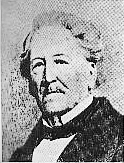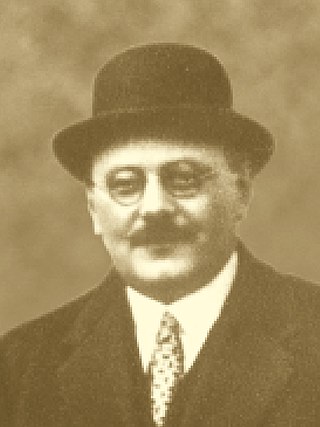
Jean-Jacques Madeleine Willmar was a Luxembourgish politician and jurist. An Orangist, he was the second prime minister of Luxembourg, serving for five years, from 6 December 1848 until 23 September 1853.

Charles-Mathias Simons was a Luxembourgish politician and jurist. He was the third prime minister of Luxembourg, serving for seven years, from 1853 until 1860.

Baron Victor de Tornaco was a Luxembourgish politician. An Orangist, he was the fourth prime minister of Luxembourg, serving for seven years, from 26 September 1860 until 3 December 1867.
Charles-Gérard Eyschen was a Luxembourgish politician and jurist. An Orangist, Eyschen served in the cabinet of Charles-Mathias Simons as Director-General for Justice.

François-Xavier Wurth-Paquet was a Luxembourgian politician, jurist, and archaeologist.
The Constituent Assembly of Luxembourg was a constituent assembly called in 1848 in Luxembourg to write and pass a new national constitution.
Paul de Scherff was a Luxembourgian politician.

Jean Ulveling was a Luxembourgian statesman, politician, and historian. He served as a member of the Council of State of Luxembourg for some years, and was a member of the Constituent Assembly which framed a new constitution in 1848. From 1854 to 1856 he represented the canton of Wiltz in the Chamber of Deputies.

The Tornaco Ministry was in office in Luxembourg from 26 September 1860 until 3 December 1867. It was reshuffled six times.

The Blochausen Ministry was the government of the Grand Duchy of Luxembourg from 26 December 1874 to 20 February 1885. It was led by Baron Félix de Blochausen.

The Fontaine Ministry formed the government of Luxembourg from 1 August 1848 to 2 December 1848. It was headed by Gaspard-Théodore-Ignace de la Fontaine.

The Prüm Ministry took office in Luxembourg on 20 March 1925. It was formed after the Chamber elections of 1 March 1925 and was supported by the Independent National Party, the Liberals, the Socialists and elements of the Party of the Right. It resigned on 16 July 1926, as the Liberals and Socialists could not agree over a bill for workers' holiday.
The Loutsch Ministry was in office in Luxembourg from 6 November 1915 to 24 February 1916.

The Reuter Ministry was the government in office in Luxembourg from 28 September 1918 until 20 March 1925, headed by Émile Reuter. It resulted from the Chamber elections of 28 July and 4 August 1918 and was reshuffled on 5 January 1920 as a result of the elections of 26 October 1919. There was a further reshuffle on 15 April 1921, when the Liberals left the government.

The Servais Ministry was in office in Luxembourg from 3 December 1867 to 26 December 1874. It was reshuffled four times.

The Willmar Ministry was in office in Luxembourg from 2 December 1848 to 23 September 1853.

The Eyschen Ministry was in office in Luxembourg for 27 years, from 22 September 1888 to 12 October 1915. It was headed by Paul Eyschen, and ended with his death.

Victor Jean-Baptiste Tesch was a Luxembourgish and Belgian jurist, industrialist, journalist and liberal politician.

The Thilges Ministry formed the government of Luxembourg from 20 February 1885 to 22 September 1888.











